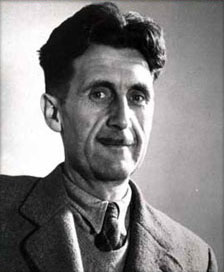The Hiroshima bomb
Size: length — 3 meters, diameter — 0.7 meters.
Weight: 4 tons.
Nuclear material: Uranium 235.
Energy released: equivalent to 12.5 kilotons of TNT.
Code name: “Little Boy”.
Dropping the first atomic bomb
At 2:45 A.M. local time (August 6, 1945), the Enola Gay, a B-29 bomber loaded with an atomic bomb, took off from the US air base on Tinian Island in the western Pacific. Six and a half hours later, at 8:15 A.M. Japan time, the bomb was dropped and it exploded a minute later at an estimated altitude of 580 +- 20 meters over central Hiroshima.
Initial explosive conditions
Maximum temperature at burst point: several million degrees centigrade. A fireball of 15-meters radius formed in 0.1 millisecond, with a temperature of 300,000 degrees centigrade, and expanded to its huge maximum size in one second. The top of the atomic cloud reached an altitude of 17,000 meters.
Black rain
Radioactive debris was deposited by “black rain” that fell heavily for over an hour over a wide area.
Damaging effects of the atomic bomb
Thermal hear
Intense thermal heat emitted by the fireball caused severe burns and loss of eyesight. Thermal burns of bare skin occurred as far as 3.5 kilometers from ground zero (directly below the burst point).
Most people exposed to thermal rays within 1-kilometer radius of ground zero died. Tile and glass melted; all combustible materials were consumed.
Blast
An atomic explosion causes an enormous shock wave followed instanteneously by a rapid expansion of air called the blast; these represent roughtly half the explosion’s released energy.
Maximum wind pressure of the blast: 35 tons per square meter. Maximum wind velocity: 440 meters per second. Wooden houses within 2.3 kilometers of ground zero collapsed.
Concrete buildings near ground zero (thus hit by the blast from above) had ceilings crushed and windows and doors blown off. Many people were trapped under fallen strunctures and burned to death.
Radiation
People exposure within 500 meters of ground zero was fatal. People exposed at distances of 3 to 5 kilometers later showed symptoms of aftereffects, including radiation-induced cancers.
Bodily injuries
Acute symptoms
Symptoms appearing in the first four months were called acute. Besides burns and wounds, they included: general malaise, fatigue, headaches, loss of appetite, nausea, vomiting, diarrhea, fever, abnormally low white blood cell count, bloody discharge, anemia, loss of hair.
Aftereffects
Prolonged injuries were associated with aftereffects. The most serious in this category were: keloids (massive scar tissue on burned areas), cataracts, leukemia and other cancers.
Atomic demographics
Population
The estimated pre-bomb population was 300,000 to 400,000. Because official documents were burned, the exact population is uncertain.
Deaths
With an uncertain population figure, the death toll could only be estimated. According to data submitted to the United Nations by Hiroshima City in 1976, the death count reached 140,000 (plus or minus 10,000) by the end of December, 1945.
Health card holders
Persons qualifying for treatment under the A-bomb Victims Medical Care law of 1957 received Health Cards; holders as of March 31, 1990, numbered 352,550.
Nagasaki
The atomic bomb dropped on Nagasaki exploded at 11:02 A.M. on August 9. Using plutonium with an explosive power of 20 kilotons of TNT-equivalent, it left an estimated 70,000 dead by the end of 1945, although both population and the deaths are uncertain.
Truman radio speech to the nation
August 9, 1945
The great masses of people will more easily fall victims to a big lie than to a small one. Adolf Hitler, 1939.
Harry S. Truman, 1945: “The world will note that the first atomic bomb was dropped on Hiroshima, a military base. That was because we wished in this first attack to avoid, in so far as possible, the killing of civilians. But that attack is only a warning of things to come. If Japan does not surrender, bombs will have to be dropped on her war industries and, unfortunately, thousands of civilian lives will be lost. I urge Japanese civilians to leave industrial cities immediately, and save themselves from destruction.”
1945
THE END
